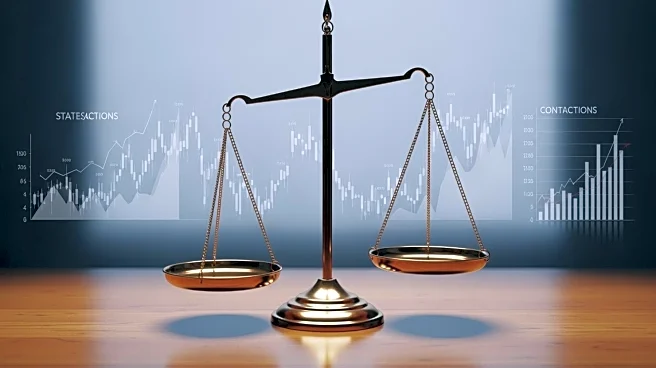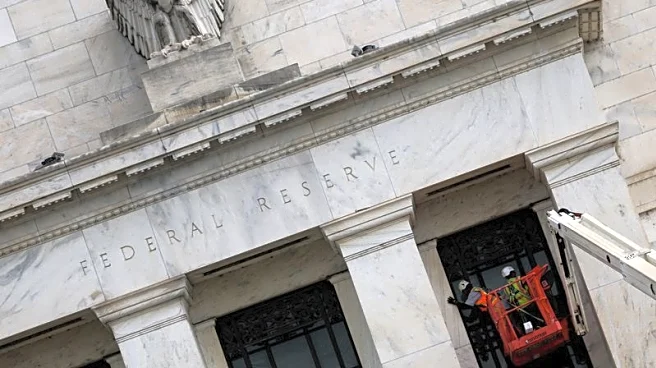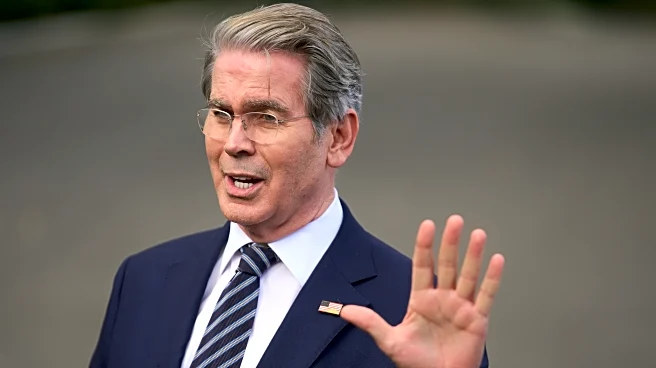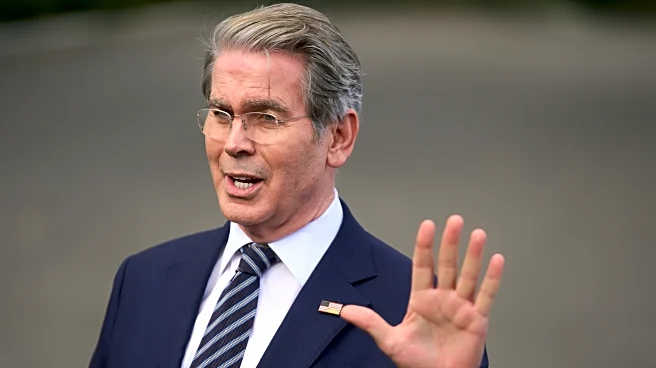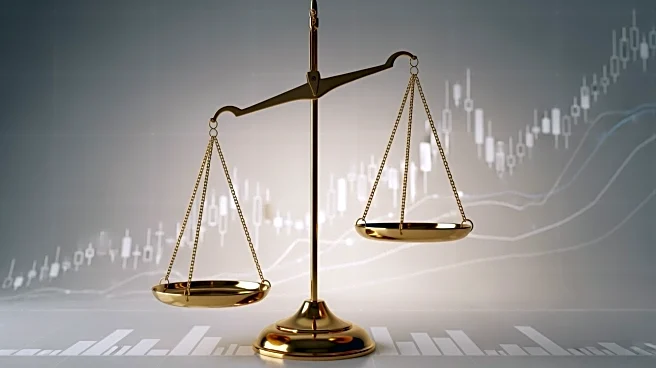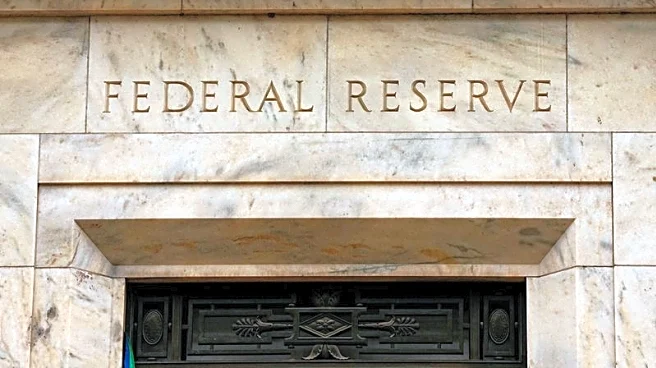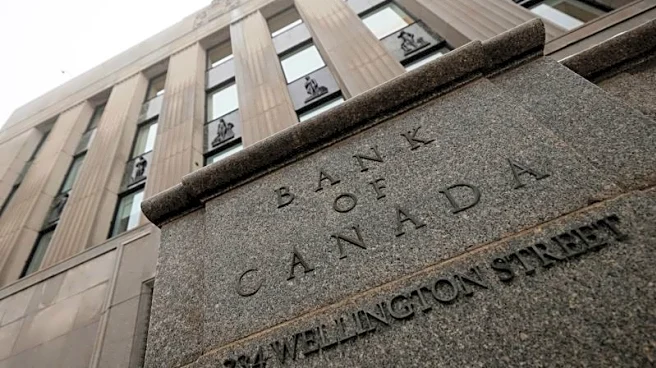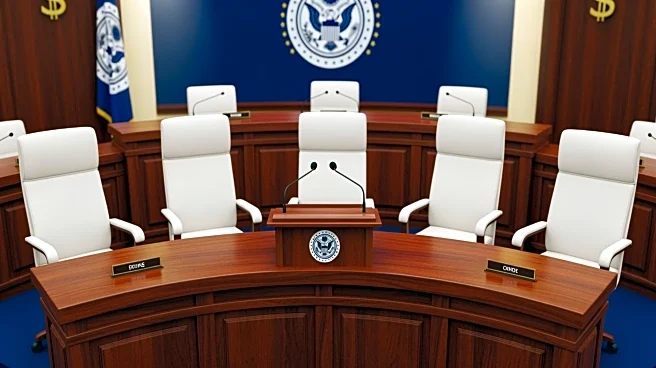What's Happening?
The Federal Reserve has reduced its benchmark interest rate by a quarter of a percentage point, marking the second rate cut this year. This decision aims to stimulate the labor market, which has been experiencing
a slowdown. Despite President Trump's calls for a more significant reduction, the Fed opted for a smaller cut. The move comes as inflation continues to rise, posing a challenge to the Fed's dual mandate of controlling inflation and maximizing employment. The Federal Open Market Committee (FOMC) has expressed concerns about the elevated uncertainty in the economic outlook, highlighting the risks to both employment and inflation.
Why It's Important?
The Fed's decision to cut interest rates is significant as it reflects the central bank's attempt to balance economic growth with inflation control. The rate cut is intended to encourage borrowing and spending, potentially boosting economic activity. However, the rising inflation could undermine these efforts by increasing costs for consumers and businesses. The decision also highlights the tension between the Fed's policy objectives and President Trump's demands for more aggressive rate cuts. The outcome of this policy decision could impact various economic stakeholders, including businesses, consumers, and investors, who are sensitive to changes in interest rates.
What's Next?
The Federal Reserve is expected to continue monitoring economic indicators closely, with potential further rate adjustments depending on future economic data. The FOMC has projected additional rate cuts, but the extent and timing remain uncertain. Political pressure from the White House may also influence future decisions, as President Trump has been vocal about his desire for more substantial rate reductions. The ongoing legal battle involving Fed board member Lisa Cook, whom Trump attempted to remove, could also have implications for the Fed's governance and decision-making processes.
Beyond the Headlines
The Fed's interest rate policy is not only an economic tool but also a reflection of the broader political dynamics in the U.S. The tension between the Fed's independence and political influence is a critical aspect of this story. The legal challenges faced by board member Lisa Cook underscore the potential for political interference in the Fed's operations, raising questions about the central bank's autonomy. Additionally, the economic conditions of rising inflation and slowing employment growth could lead to a scenario of stagflation, which would present a complex challenge for policymakers.




